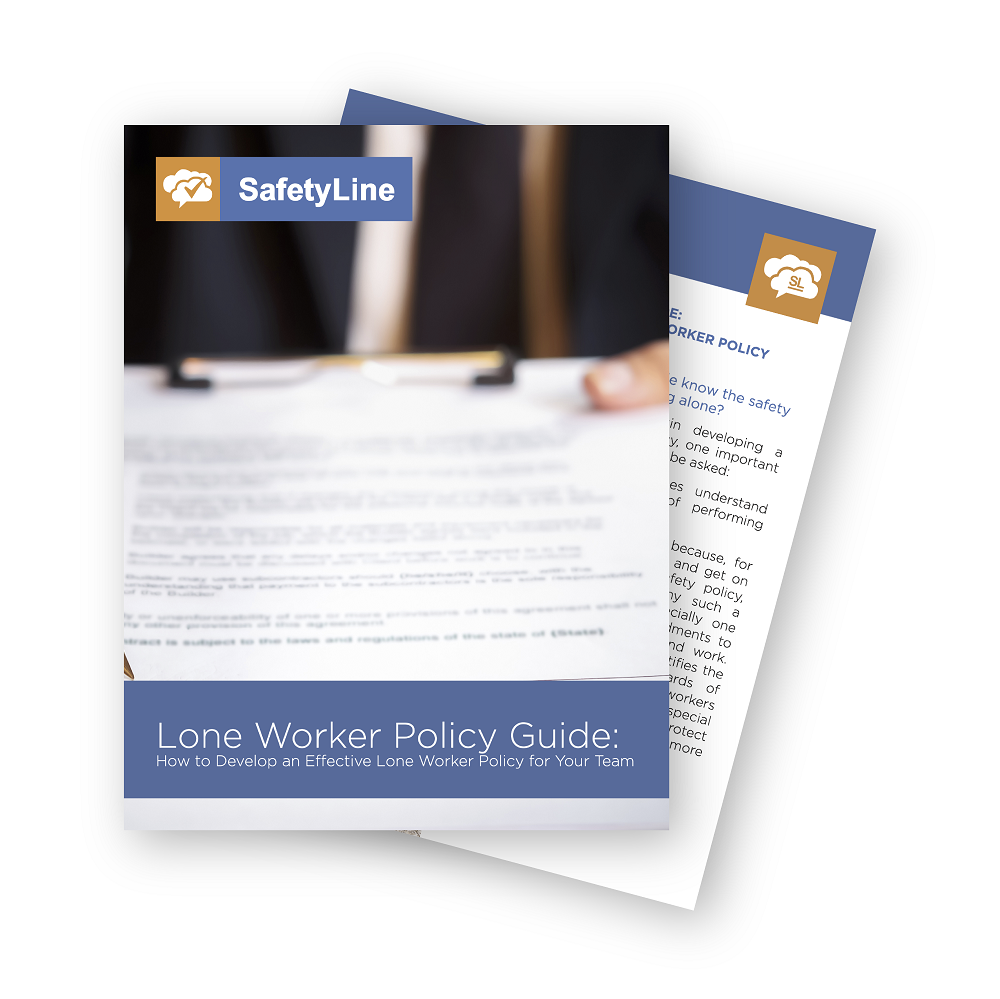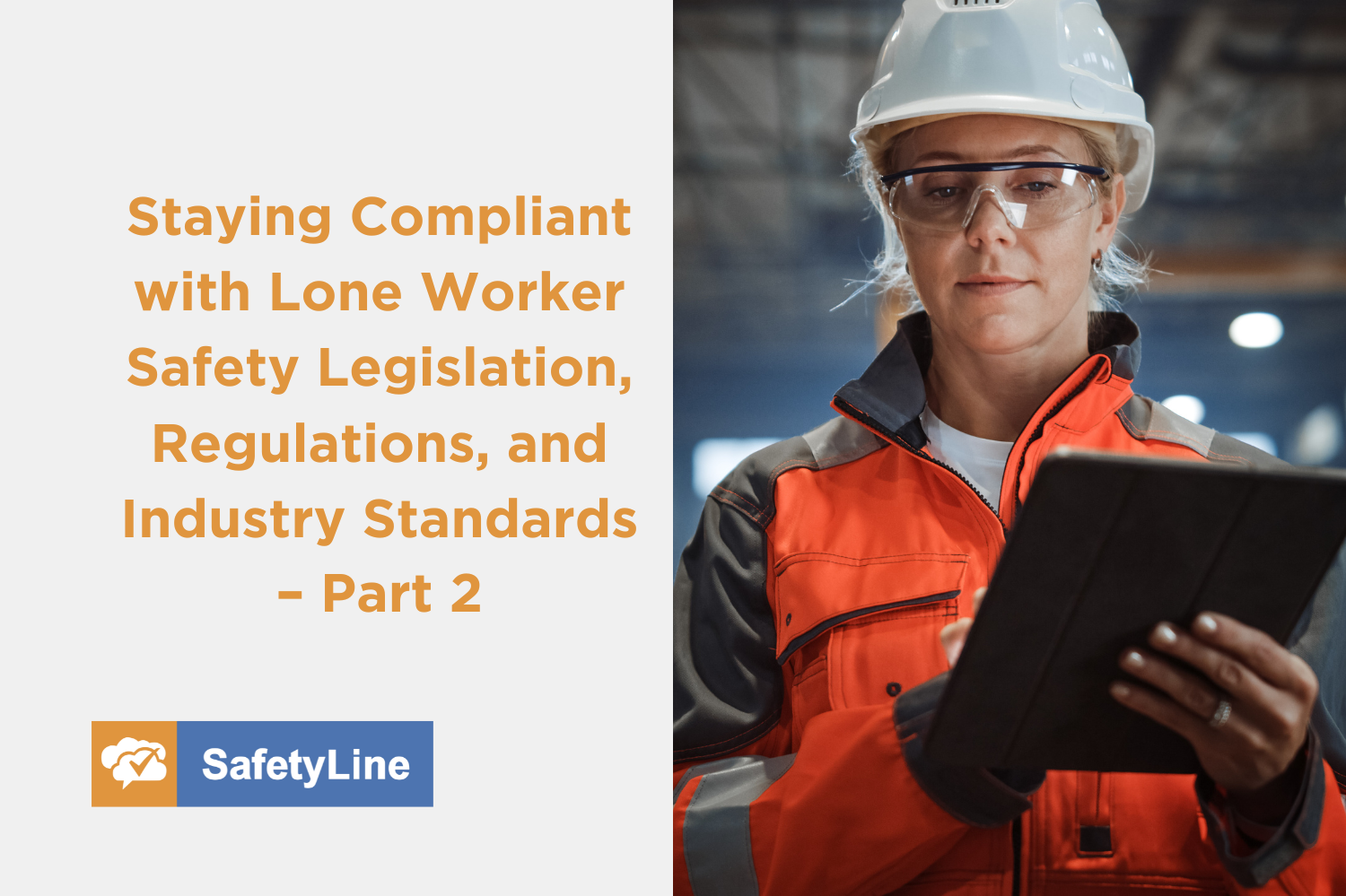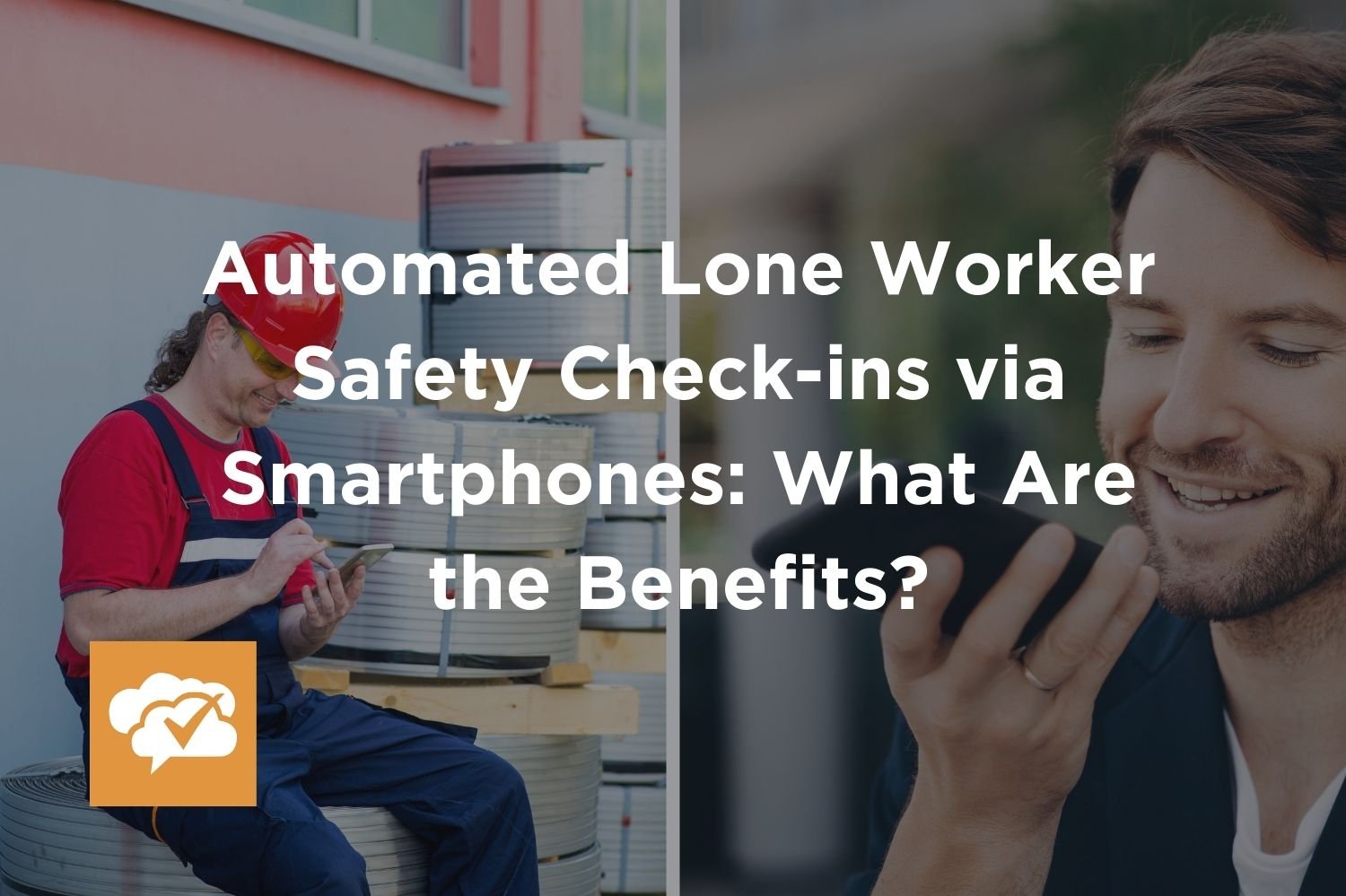Featured Resources
Lone Worker Policy Guide and Template
A lone worker policy is an effective way to ensure that your lone workers are well-educated on your company’s work-alone rules and have extensive knowledge of all workplace hazards that could be encountered on the job.
Hazard Assessment Guide
In the process of doing a hazard assessment for your workplace, it is almost a certainty you’ll learn information about the operational aspects of your organization you were unaware of before the assessment.
View eBook
Develop a Free Lone Worker Program for Small Teams
Developing a free lone worker check-in system is a simple process for small teams that any organization can implement.
View eBook
SafetyLine Blog Categories
General Safety | Lone Worker Safety | SafetyLine News and Updates | SafetyLine Product Updates | Compliance, Policy, and Regulations | Downloadable Resources |
Staying Compliant with Lone Worker Safety Legislation, Regulations, and Industry Standards - Part 2
Best practices for ensuring lone worker safety
In addition to staying on top of local safety legislation and regulations, there are a number of steps employers can take to make sure their lone workers are safe.
Communication and monitoring systems: The first best practice to ensure lone worker safety is to have effective communication and monitoring systems in place. It is essential that employers establish a system for workers to be able to communicate with others in case of an emergency……
Lone Worker Hazards in Water and Wastewater Treatment
Working alone in the water and wastewater treatment industry comes with unique hazards, and employers are responsible for ensuring the health, safety, and well-being of their lone workers. However, solving the complicated issue of lone worker safety is sometimes easier said than done. This article will highlight the dangers lone workers face in this industry and how an automated lone worker solution can help.
Staying Compliant with Lone Worker Safety Legislation, Regulations, and Industry Standards – Part 1
In the USA, the Occupational Safety and Health Administration (OSHA) does not have specific regulations for lone workers. However, OSHA requires employers to ensure a safe and healthy working environment for their employees, including those who work alone or in isolation (OSHA, 2022). Additionally, several US states have their own regulations that require employers to take specific steps to protect their lone workers.
The Role of Technology in Ensuring Lone Worker Safety
When you hear the term “lone worker” who do you picture in your head? Because they exist across all industries, lone workers have many different faces and work environments. No matter what industry, you are considered a lone worker when you perform your job in conditions where there are no people nearby and/or help is not easily accessible in an emergency.
The Benefits of Attending Safety Conferences: 2023 Safety Conferences and Expos
Safety conferences are unique opportunities to connect with other industry professionals, learn about the latest occupational health and safety (OHS) technologies, as well as stay up-to-date with safety legislation and regulations.
SafetyLine’s Year in Review: Top Blogs of 2022
In 2022, SafetyLine published 35 original blogs and content that ranged from cardiac arrest and call centers to creating emergency action plans and conducting lone worker needs analysis – we covered a lot. Out of all the content, six blog articles resonated most with readers in 2022.
Risk Mitigation Strategies: How to Plan for the Worst
Every safety manager and employer would love to have a way to predict workplace accidents before they hurt an employee. Unfortunately, that does not exist yet, however, the good news is there are risk mitigation strategies that can be implemented now, preventing many of these accidents from taking place and as a result, protecting your workers from injuries and harm.
A New Era of Personal Safety Devices on the Market
In a nutshell, these devices will protect an individual worker (or workers - in coordination with other devices) from certain safety hazards in the workplace and other environments and situations. Personal safety devices help employers protect their employees when mobile, employing various technologies to address a range of safety challenges in the workplace at the time. Personal safety devices include a broad group of technology that can include:
Social Worker Safety: Keeping Safe While Working Alone
While society prizes those among us who put others first, it takes more than just empathy to be a successful social worker. Social workers combine active listening, knowledge of the rules, and positivity to succeed. But unlike other public service professions, along with health workers, paramedics, and firefighters, social workers can find themselves in harm’s way. They can, however, reduce their risk if they are prepared.
How to Prepare for Working in Hot Environments
Working in the heat can cause a range of health conditions, putting your people at risk, especially during the summer months. Requiring workers to perform their jobs in hot conditions also requires the employer to do everything possible to protect employees, helping them work in high temperatures safely.
Automated Lone Worker Safety Check-ins via Smartphones: What Are the Benefits?
As we continue to live in an increasingly technological world, it can be tricky navigating the mass of information and the number of options for worker safety, such as phone-based apps, safety tags, wearables, etc. As you read further, you will learn about three common types of lone worker safety tools, hopefully making it easier for you to determine which system is best for your team and occupations' health and safety needs.
4 Summer Safety Tips For Lone Workers
During summer, it’s especially important to pay close attention to your health, wellbeing, and safety as a lone worker. In this article we will look into the ways you can prioritize your health during the summertime heat and how to keep you safe and sound all season long.
Conducting a Lone Worker Needs Analysis
To find and document important safety details and information, you need to conduct a lone worker needs analysis, which will highlight and improve four primary areas including safety procedures, areas for improvement, opportunities that should be explored further, and holes in your lone worker safety program.
May 2022 Recap: In Other News and What You May Have Missed
Here is all of the occupational safety and health-related news that you may have missed in May. Hope you’re having a safe spring!
Context is King – SafetyLine’s Visual Locator for its Lone Workers
SafetyLine users can now see a more effective visual locator of where lone workers are performing their jobs. This addresses a common and understandable misunderstanding of workers’ locations on the SafetyLine map. Monitors sometimes assume the location pin was accurate because the accuracy of the data wasn’t presented visually. Occasionally, there has been confusion around the fact that the map pin shows the lone worker at an incorrect location. This occurs because of issues caused by imperfections in general GPS location accuracy.
Work Alone Call Centers vs Automated Work Alone Solutions: The Pros and Cons
When a worker is experiencing an emergency, they need someone who they can reliably contact to get immediate help. One strategy being employed to address this issue is by creating internal call centers to monitor vulnerable and lone workers. What are a high-functioning and collaborative team, the call center is funded by the company budget or employed by company staff.
April 2022 Recap: In Other News and What You May Have Missed
Here is all of the occupational safety and health-related news that you missed in April: safety officers, psychological safety, fire safety, safety technologies, connected safety programs, as well as new OSHA rules for healthcare.
The Pros and Cons of a Manual Lone Worker Safety System
As you read further, you will learn about the pros and cons of a manual lone worker safety system. We will also look at the benefits and costs of an automated lone worker safety system for your employees working alone.
11 Ways to Evaluate Your Lone Worker Solution
A lone worker solution is a system, service, and/or safety device that protect lone workers (people working alone and remotely). It will signal an emergency when the lone worker needs help and it monitors their well-being with safety check-ins. Let’s look at the 11 strategies to evaluate your lone worker solution.
March 2022 Recap: In Other News and What You May Have Missed
Here is all of the occupational safety and health-related news that you missed in March. Welcome back spring! Setting Lone Workers Up for Safe Success, 5 Best Practices for a Mobile-Based Safety Program, Harness the Power of Data and Analytics to Reduce Workplace Injuries and Fatalities, Workers favor more safety training, digitization of programs, and SafetyLine is nominated for a COS award!























